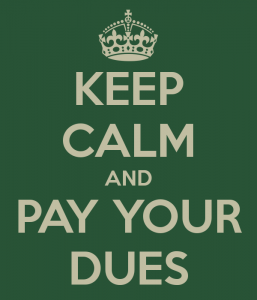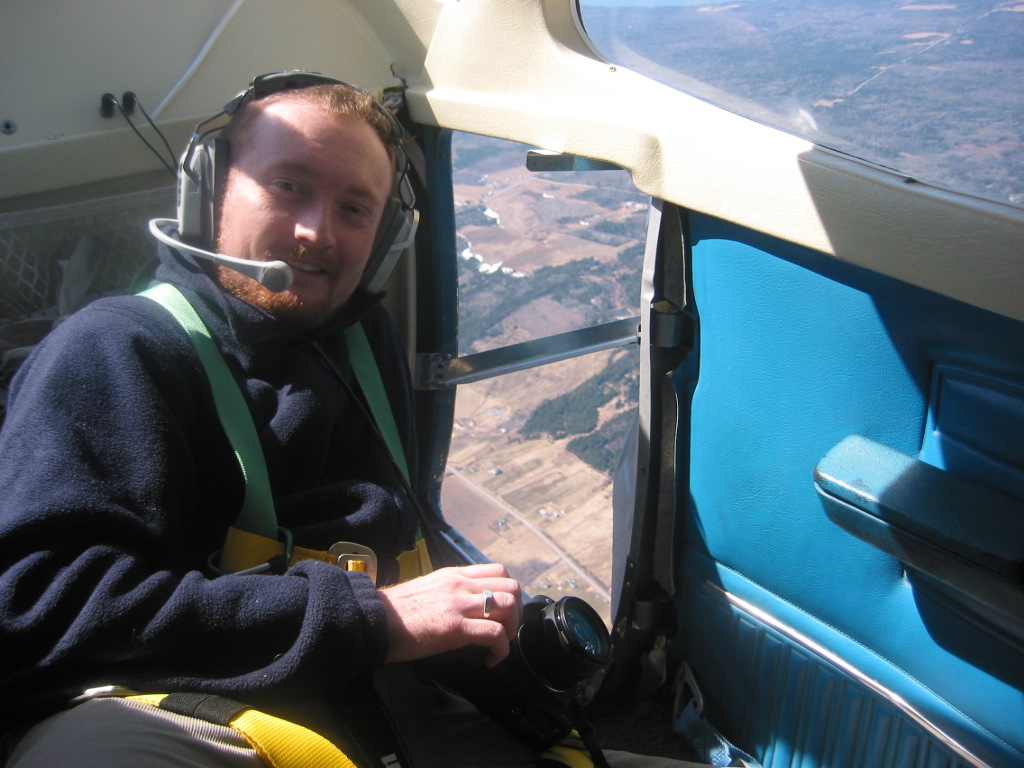
As one of the former team members, and until last fall a volunteer of the Canadian Geomatics Community Round Table (CGCRT), I am going to interpret and analyze the most recent communications from the CGCRT, the new name Geoalliance, and the new governance model that has been distributed.
Miscommunications
Unless you had volunteered for one of the seven working groups formed after the June 2014 “Team Canada” event, you most likely have not received any news about the progress on the project until very recently. For the last 7 months, the CGCRT seemingly had gone to ground with the project. I have been just as frustrated as everyone else in the geomatics community at the lack of information and news from the CGCRT. We were assured they would be using the email subscriber list and website to keep us abreast of the project. Now, after seven months of virtual silence, the first emails we received from the CGCRT in 2015 seemed rather odd. They were full of self-congratulations, but very little information. If you didn’t have the chance to read these emails, you can take a look here: Email 1 / Email 2. The first one is particularly full of hyperbole without much purpose. I suspect these recent communications had a couple of goals: One, to try to allay fears that the project has been flagging; the other, to rekindle some interest from the geomatics community.
Why is this? Are they desperate to convince the reader that the CGCRT is still indeed moving forward and that the last seven months spent in silence were somehow part of a master plan that is going really, really well?
The most recent emails contain the CGCRT’s new governance model, finally giving us some idea of what the CGCRT has been doing for 7 months. They also reveal a new name for the umbrella group: GeoAlliance Canada.
What’s in a Name?
Let’s have a closer look at this new name. After discussing it with others in the community, I and others are very disappointed that the CGCRT has begun to spin and rebrand the geomatics community effort as a “Geo” community effort. I find myself asking, why?
Are we creating an umbrella association for every “Geo” group out there? After all, “Geo” doesn’t just refer to geomatics and geography, but also geobotanists, geochemists, geochronologists, geologists, geomancers, geomorphologists, geopoliticians, geoscientists, geostrategists…you get the point. Exactly how big is this tent that the CGCRT is creating, and to what purpose? In the governance document, they try to cover themselves by explaining that it is more inclusive to use the term “Geo” rather than geomatics. With this in mind, they have unilaterally named the new umbrella group the “GeoAlliance.”
The word geomatics has deep Canadian roots and even deeper ones in Quebec. How could the CGCRT not see the branding opportunity associated with that to showcase everything that is Canadian geomatics to the world? An entire piece of the strategy is to develop the geomatics brand for Canada. It’s our word – why would they not include it in the name of the umbrella organization whose whole purpose is to shepherd the Pan-Canada Geomatics Strategy? I don’t doubt their intentions were good, but as they say, the road to “you-know-where” is paved with good intentions.
“GeoAlliance” is an obvious branding and marketing misstep that can’t be fixed by using the tagline they have tacked on at the end of it. It reads: “GeoAlliance Canada – The Canadian geomatics, geography and geospatial leadership network.” They try to argue that this new name is easier to remember than an acronym, and that it is very original. What about using the name Geomatics Alliance of Canada? That’s just as original and much clearer. If they wanted to be unique, they’ve failed pretty badly; a quick Google search brings up many entities using the word “GeoAlliance” both in Canada and abroad.
What was wrong with using the word geomatics, anyway? The CGCRT used it quite effectively to bring the geomatics community together. Why jettison it now? I suspect politics played a huge part in the selection of the name. Sources within the project tell me that one or two individuals dug in their heels and demanded the new group should be branded with the term “geography.” This “geo” business is a compromise, as those involved got fed-up with arguing over what should have been a moot point.
My last thoughts on the name debate is the way that the CGCRT has dictated the name to the community. This take-it-or-leave-it approach is unsavory at best. What was supposed to be an open and collaborative process has become a top-down affair.
The community came together in June of last year for a Team Canada geomatics event. There, we worked collaboratively on the “Action and Implementation Plan” for the national geomatics strategy. We did it together as a community. We were not working on a national “Geo” or “geography” strategy, but a geomatics strategy. Now at the eleventh hour, the CGCRT does an about-face and drops geomatics, even though the CGCRT and the new umbrella group is supposed to support and implement what is officially called the “Pan Canadian Geomatics Strategy.”
So far I have not seen any convincing reasons in the communications or the governance document that justifies betraying a term the community continues to embrace. Have a look at this article written by Ed Kennedy and Evert Kenk, “A Geomatics Sector that Spatially Enables a Geospatial Community – A Team Canada Perspective.” At the very least, it makes me think that if there was to be a compromise on the name, it should have been the Geospatial Alliance. That would have been much more definitive than the ambiguity of “Geo.”
The CGCRT wants to have an April event to ratify the new governance model and put a board together. I suggest that before their April event, the CGCRT use some of its many communications tools to solicit and then propose some names for the consideration of the stakeholders. This can be ratified in April. If they can make a case for GeoAlliance that’s fine, but the community should have the opportunity to decide.
Issues Related to Funding & Governance
The majority of the governance model seems sound. I heartily support most of the overall structure in governance model with its grouping of member types into 4 groups: Business, Education, NGO and Government. The board structure looks good as well. The value proposition is well communicated. My concerns lie with where they will be obtaining funding and how the membership dues are structured.
Let me come to the problem of the funding by a circuitous route. Strangely, the second email sent after such a long silence from the CGCRT mentions a conflict of interest with Peter Sullivan, Canada’s Surveyor General, that resulted in his stepping down from the project. That’s really too bad, as Peter has been the firm hand on the tiller for the project over many years. Peter stepping away could have been accomplished quietly and without fuss, yet for some reason the CGCRT wanted to bring it to our attention. This communications blunder begs an important question: What could the conflict of interest be between the Surveyor General of Canada, who works for NRCan, and the CGCRT?
I made a few calls to sources within the project and followed a clue in the governance document and believe I figured out what the conflict is. It ties into the funding model proposed in the governance model. Following that thread, let’s look at the funding model and membership dues.
The dues being asked for have been intentionally set at what the CGCRT believes is a reasonable level. There could be doubt within the CGCRT that not enough stakeholders will buy into the new association to make it viable. They might be hoping to ask NRCan to inject support cash and maybe even secretariat support for the new umbrella group to float it. NRCan might do it, as they not want to see their investments thus far go down the tubes. If so this is likely why Peter stepped down. He could not sit as the co-chair of an organization that asked for hundreds of thousands of dollars in support of an effort he leads. There is further evidence of this in the governance document itself. To quote from the CGCRT governance document: “Productive discussions are advancing with partners that have expressed interest in addressing this deficit by investing in the GeoAlliance Canada launch with financial and in-kind support.” That might be alluding to funds from NRCan.
Membership Dues
If the CGCRT does not get the taxpayer dollars it seems to think it needs, it will have to rely on membership dues. While a sliding scale for membership based on the size of an organization would seem appropriate (The CGCRT even acknowledges this in the governance document), they instead ask for $1,500 and $2,000 for government, business, education, and non-profits the first year, and then it goes up year by year. The model proposed is too simplistic; the geomatics community in Canada does not fit into these neat financial pigeon holes. Why should a big company like Intermap pay the same amount as a small company with few employees?
One size does not fit all, and this model is betraying small organizations. It will hurt the participation from small groups like the NGO Geospatial Niagara. Right off the bat, they are limiting those who can contribute. Some of the smallest groups and businesses have some of the best talent and energy that we could use to move the “Pan-Canadian Geomatics Strategy” forward.
NRCan, CGCRT and the second coming of GIAC
If the community does not come together to support the Pan Canadian Geomatics Strategy by joining an umbrella group, than so be it. The community can’t go running to the government to support itself; this would defeat the purpose of the project. The latest efforts of the CGCRT are eerily reminiscent of the creation of the Geomatics Industry Association of Canada (GIAC). It too was heavily bankrolled by government for the first two years, and then by GeoConnections contracts. Today, GIAC is dead in all but name, deeply in debt, and nonfunctional. It was not able to attract enough members to remain viable. Yet it was able to soldier on with government help until that too dried up. Is that what we are building?
Not so Bad
There are many aspects l like about the governance model. I have concentrated my attention here on the two aspects I do not like that should be reconsidered. The first was the ill-considered name of “GeoAlliance Canada.” The second is the fee structure for member organizations to join.
I have also been critical of the CGCRT communications, but as a whole I want to congratulate them on not giving up even when it seemed they had. Before I am accused wrongly of being against the project, I want to point out that I was the first to sign onto and endorse the strategy and goals of the CGCRT after the June “Team Canada Event.” I believe in the goals of the strategy and the initiative and I know there are many hard-working and dedicated people involved in this project. I’m hopeful that it might not be too late to save the project as it would have so many benefits to the geomatics community and to Canada.
Can the community live with the name “GeoAlliance” if it has to? Yes of course it can, but we shouldn’t have to. Do we have to accept a simplistic structure for participation that excludes many members of the geomatics community in Canada? No, of course not. It is our community and our project, and we can work on these issues together.
It is encouraging to see the CGCRT bringing in some new blood with the addition of Brad Ashley, who works for the MMM Group in Calgary, to fill Peter’s vacant seat. I’ve worked with Brad in the past, and he’s an enthusiastic supporter of the geomatics community and the geomatics brand in Canada. I hope that he can help steer them away from this “Geo” misstep. I will continue to watch and share my thoughts on the project. I’m looking forward to more news in the future.






Be the first to comment